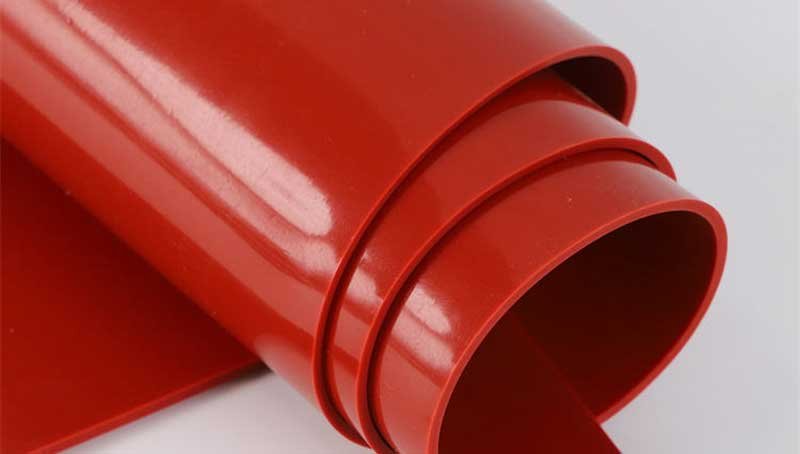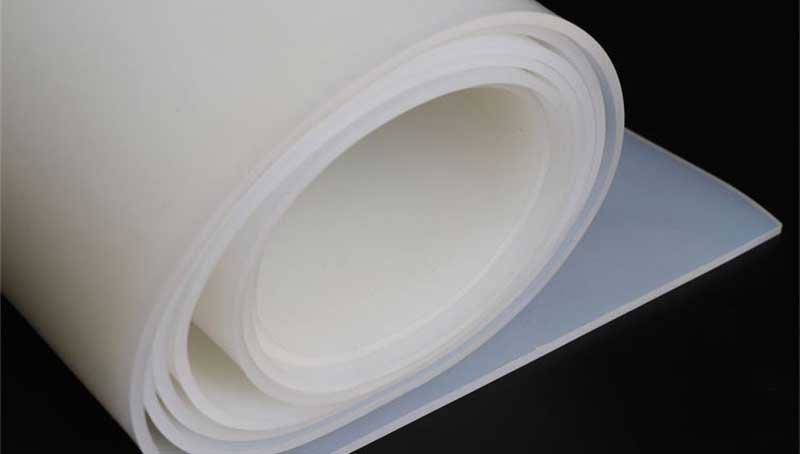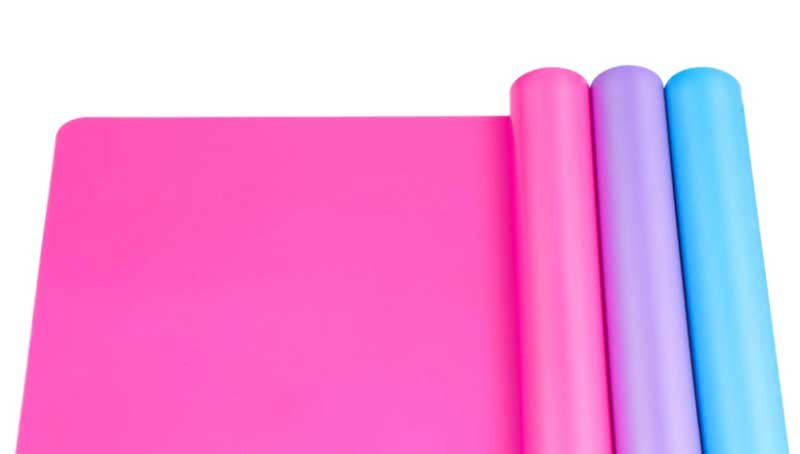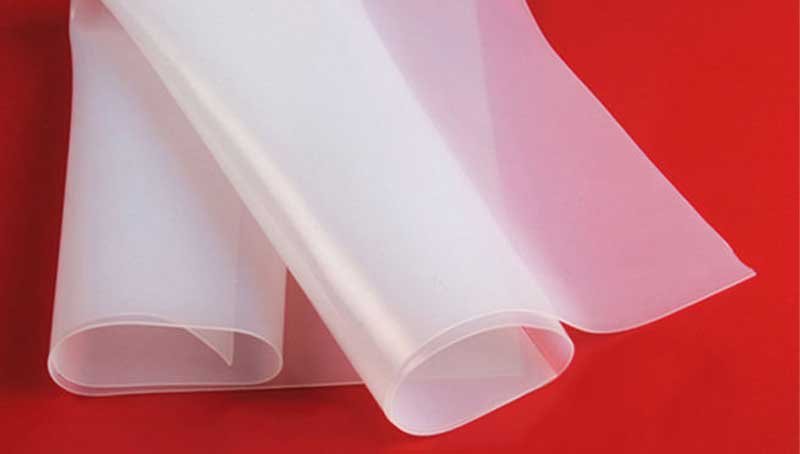Ever wondered how industries achieve ultra-thin, high-performance silicone components?
This article dives into silicone cold roll forming—a groundbreaking technology reshaping how silicone products are made. We’ll explore its unique advantages, real-world applications, and solutions to key challenges.

What Is Silicone Cold Roll Forming?
Silicone Cold Roll Forming is a technique used to shape silicone materials through a cold rolling process. Unlike traditional molding methods, it relies on mechanical rollers to compress and form silicone sheets or films. This technology is mainly used to create thin, flat, and high-precision silicone products. It is particularly suitable for producing large-area, thin-film silicone components, such as silicone membranes and sealing gaskets.
What Are the Unique Advantages of Silicone Cold Roll Forming?
Silicone cold roll forming offers a range of benefits that traditional methods can’t match. We will explore the key advantages of silicone cold roll forming, from high precision and eco-friendliness to its potential for creating innovative composite materials.
High Precision and Consistency:
Cold roll forming provides precise thickness control, ensuring consistent size and accuracy in the final product. This is especially important for applications that require high precision, such as electronic seals and medical device components. By adjusting pressure finely, cold roll forming guarantees that each batch of products is consistent in size, shape, and function.
Lower Waste and Cost:
Compared to other forming methods, cold roll forming generates less waste and does not require expensive molds. This makes it highly cost-effective for small-batch and customized production. With precise process control, material usage is optimized, reducing waste and overall production costs.
Eco-friendliness and Energy Efficiency:
Cold roll forming does not require high-temperature heating, resulting in lower energy consumption compared to thermal forming methods. It is also more environmentally friendly. Since the process does not involve excessive heat treatment or chemical additives, its environmental impact is minimal, meeting modern environmental standards.
Suitable for Multi-functional Composite Materials:
Cold roll forming can combine silicone with other materials, such as metal foils, conductive fillers, and antimicrobial additives, to create multifunctional composites. This enables silicone cold roll forming to not only meet traditional sealing and isolation needs but also find applications in smart electronics and medical devices, pushing products toward greater functionality.

Where Can Silicone Cold Roll Forming Be Used?
Silicone cold roll forming technology has been widely applied across various industries, including electronic devices, automotive, medical equipment, and wearable devices.
| Application | Advantages | Features |
| Silicone Seals | High precision, temperature and weather resistant | Elastic, vibration-absorbing, easy to install |
| Automotive Seals and Gaskets | Resists extreme temps and chemicals | Soundproof, precise fit, reduces costs |
| Medical Device Seals | Non-toxic, sterilizable, prevents contamination | Bacteria-resistant, durable, customizable |
| Wearable Device Straps | Comfortable, water and sweat resistant, durable | Adjustable, customizable, long-lasting |
Silicone Seals
Application: Silicone seals are widely used in electronic devices to provide waterproofing, dustproofing, and soundproofing. They can be found in products such as smartphones, laptops, televisions, home appliances, and vehicles. Cold roll forming enables precise manufacturing of these seals, even for high-precision and complex shapes.
Technical Advantages: Cold roll forming offers high precision and consistency by accurately controlling the thickness and shape of silicone seals. This ensures a perfect fit for various electronic devices, enhancing sealing performance. Moreover, silicone’s excellent resistance to high temperatures and weather conditions helps maintain its elasticity, preventing aging, hardening, or cracking.
Product Features: The silicone seals exhibit strong elasticity, which helps absorb vibrations and impacts, thereby protecting the devices. They are also easy to install and replace due to their high flexibility. Even under extreme weather conditions, these seals maintain long-term durability without losing their elasticity or function.
Case Study: Apple’s electronic devices, such as the iPhone and MacBook, use silicone seals to enhance water and dust resistance. Cold roll forming ensures that the seals perfectly align with the intricate structure of these devices, providing superior protection.
Automotive Seals and Gaskets
Application: In the automotive industry, silicone cold roll forming is primarily used for seals and gaskets in car windows, doors, and hoods. These seals are crucial for ensuring the vehicle’s overall waterproofing, dustproofing, and soundproofing.
Technical Advantages: Silicone seals can withstand extreme temperature fluctuations, making them ideal for both high-temperature and cold environments. Moreover, silicone resists chemicals like oil, saltwater, and other corrosive substances. This prevents external elements from entering and extends the lifespan of the vehicle’s components. These seals are also highly durable, maintaining their elasticity and functionality even after long-term exposure to sunlight or rain.
Product Features: The seals provide excellent soundproofing, which reduces noise levels inside the car and enhances comfort. Thanks to cold roll forming, these seals can be produced in complex shapes. This helps shorten production cycles and reduce costs. The high precision of the process also ensures a perfect fit with automotive components, improving overall sealing performance.
Case Study: Luxury car brands like Mercedes-Benz and BMW use silicone seals and gaskets formed through cold roll technology to ensure the doors, windows, and hoods are well-sealed, boosting their water, dust, and noise resistance.

Medical Device Seals
Application: Silicone cold roll forming is frequently used in medical devices to produce seals, gaskets, and sealing pads. These components are essential for ensuring the sterility, sealing, and biocompatibility of medical equipment.
Technical Advantages: Silicone is naturally non-toxic and hypoallergenic, making it ideal for long-term contact with the human body, particularly in medical applications. Silicone seals can withstand high-temperature steam sterilization without deforming or losing functionality. Besides, the precision and smoothness achieved through cold roll forming are critical for maintaining the sterility of medical devices and preventing contamination.
Product Features: Silicone seals are resistant to bacteria and don’t harbor microorganisms even after frequent cleaning and sterilization. They can also endure pressure and stretching, which is crucial for medical devices requiring tight seals. Furthermore, the flexibility of cold roll forming allows for the customization of various shapes to fit different types of medical devices.
Case Study: Philips Medical Devices uses silicone seals formed through cold roll technology to ensure that its equipment remains tightly sealed and durable even under high-pressure, high-temperature sterilization conditions.
Wearable Device Silicone Straps
Application: Silicone straps are commonly used in wearable devices like smartwatches and fitness trackers. Cold roll forming technology ensures that these straps are ergonomically designed for comfort and durability.
Technical Advantages: Silicone’s softness and comfort make it ideal for long-term wear, especially during physical activities. The material is water-resistant and sweat-resistant, making it perfect for sports such as swimming or running. Silicone straps also have excellent abrasion and aging resistance, allowing them to maintain a good appearance and comfort level over extended periods of use.
Product Features: Cold roll forming makes it possible to produce adjustable straps in different sizes to suit various wrist sizes. The straps are also available in a wide range of colors and designs, allowing users to personalize their wearables. Due to their high elasticity, silicone straps provide a comfortable fit for long hours of use.
Case Study: Brands like Apple Watch and Fitbit use silicone straps made through cold roll forming, offering users both comfort and customization options for their wearable devices.

What Are the Core Challenges and Solutions in Silicone Cold Roll Forming?
Silicone cold roll forming technology is highly efficient and widely applied, but it still faces several technical challenges in industrial processes. Below are some challenges and their corresponding innovative solutions.
Process Precision Control Challenges
- Thin silicone layers (<0.1mm) often face significant thickness variations, sometimes exceeding ±5%. Besides, precision issues arise in microstructures, with deviations greater than ±10μm. To address this, a closed-loop system using a laser thickness gauge (0.1µm resolution) ensures real-time monitoring and adjustment of roller distance. The material is compressed in 3–5 stages, gradually reducing pressure by 20% at each step to prevent stress build-up. For better microstructure accuracy, nano-engraving technology, like femtosecond lasers or focused ion beams (FIB), is used to achieve a precision of ±1µm. Upgrading rollers with tungsten carbide ceramic coatings (hardness ≥2000 HV) helps minimize wear and maintain consistent precision over time.
Silicone Adhesion to Rollers and Demolding Challenges
- Uncured silicone can easily stick to the rollers during the process, leading to interruptions or surface defects. One solution is to use PTFE-coated rollers, which reduce friction (coefficient <0.1) and prevent sticking. Another option is to pre-cure the silicone by 10–20%, forming a micro-shell on the surface that stops it from sticking. Chemical demolding solutions include adding small amounts of fluorine compounds, like perfluoropolyether (0.1–0.5%), which migrate to the surface during curing and create a demolding layer. Alternatively, using water-based silicone emulsions on the rollers makes demolding easier, with spray amounts controlled at 0.5–1.0 g/m².
Curing Efficiency and Uniformity Challenges
- Room temperature vulcanization (RTV) often takes over 24 hours, and incomplete curing can reduce the material’s mechanical properties. To speed up the curing process, platinum catalysts like Wacker CAT 50 are used, cutting curing time to 4–8 hours. Humidity control also helps accelerate crosslinking, especially for condensation-type RTV silicones. A segmented curing process is another solution. UV-LED modules (365nm, 10–20 W/cm²) are installed at the end of the roll forming section to quickly cure the surface (50–100µm deep). Afterward, low-temperature ovens (80–100°C) are used to complete the curing process, reducing total curing time to 2–4 hours.
Conclusion
Silicone cold roll forming is a efficient and eco-friendly manufacturing. Whether you need medical-grade seals, flexible electronics, or custom automotive components, this technology delivers unmatched precision and cost savings.
Your product deserves silicone that fits perfectly. No more compromises. Whether it’s unique shapes, colors, or performance specs—we craft it exactly to your vision. Contact us now and perfection starts here.